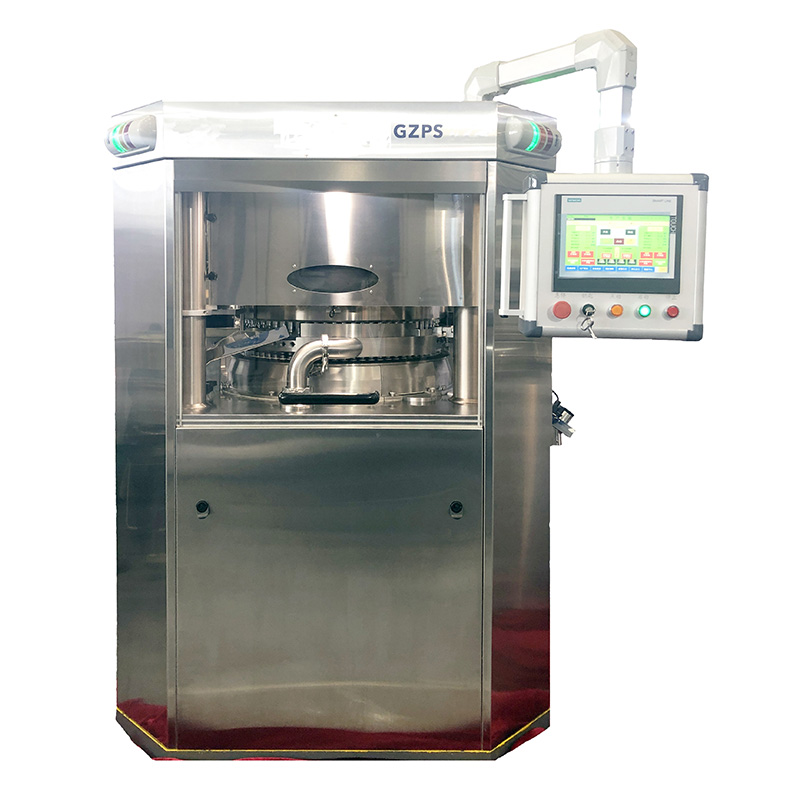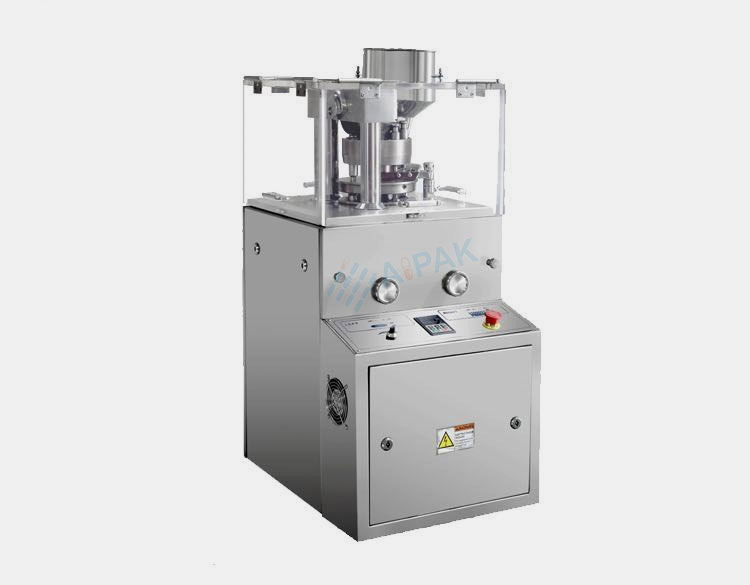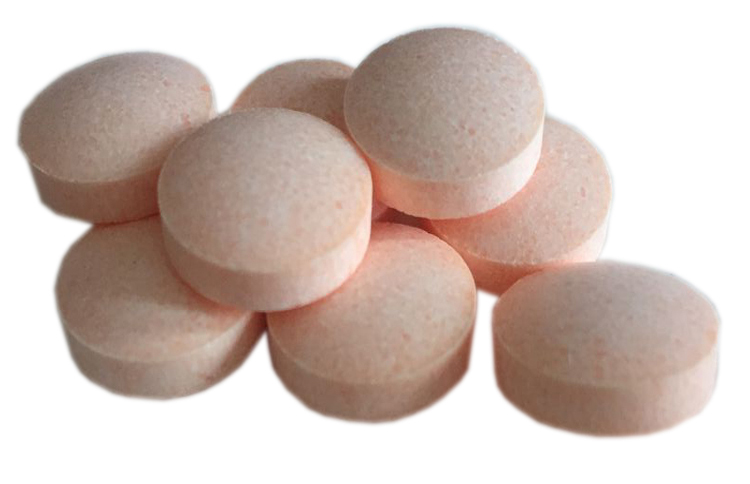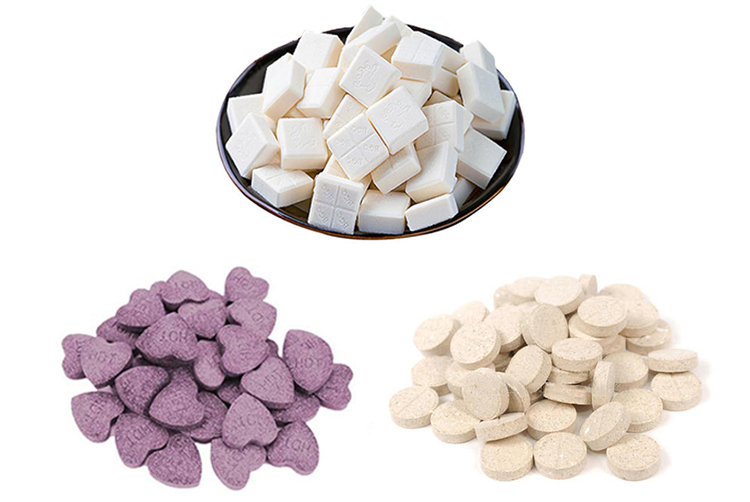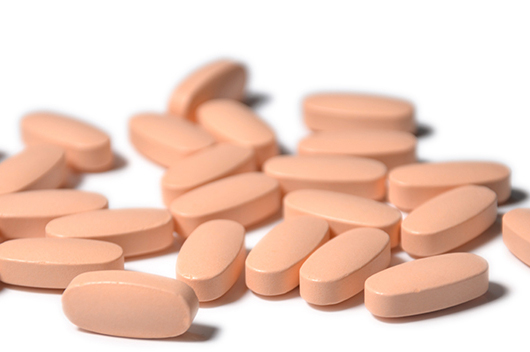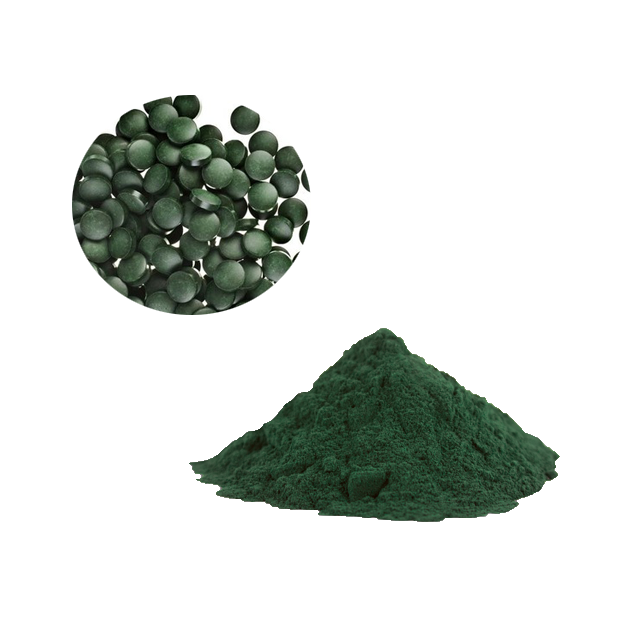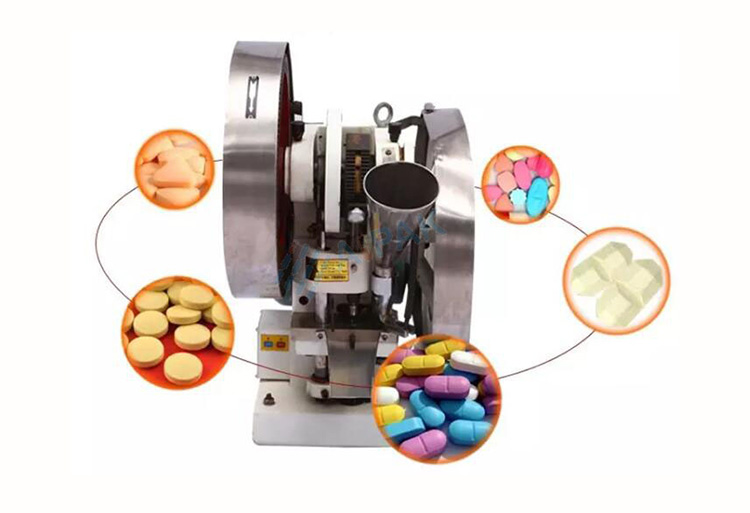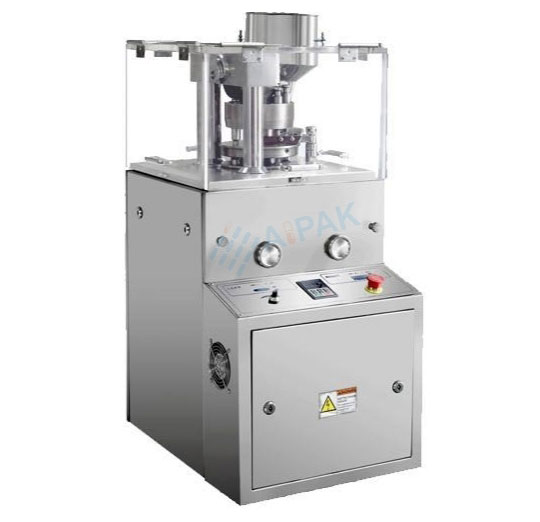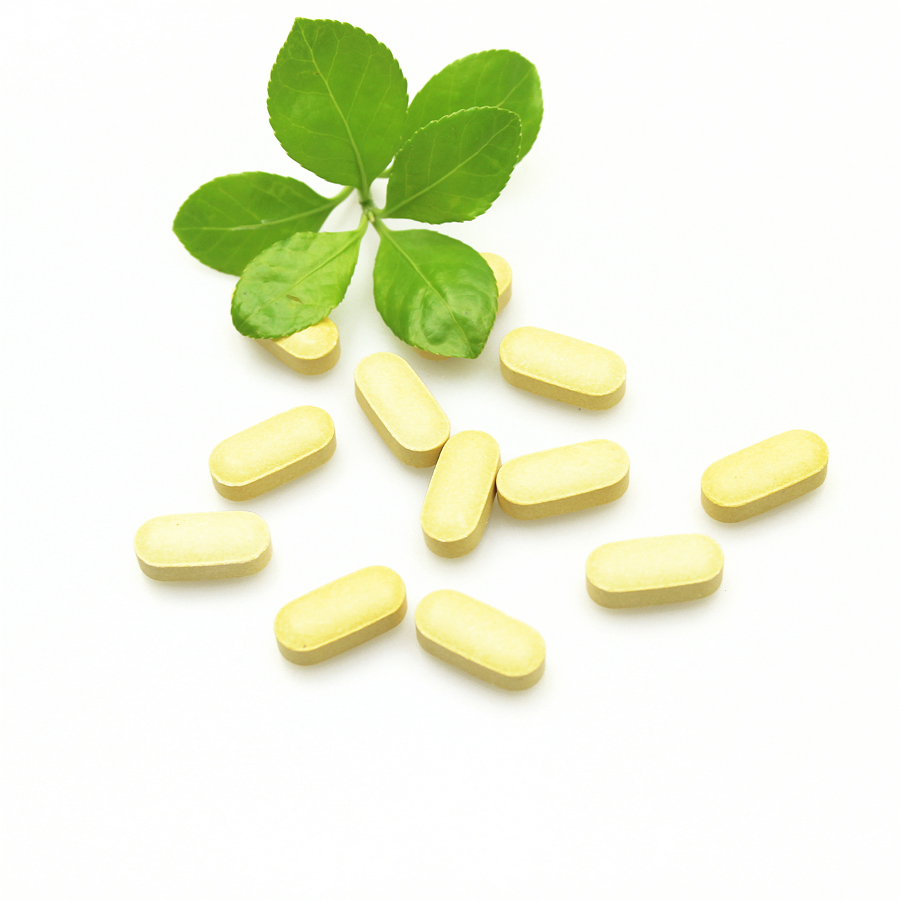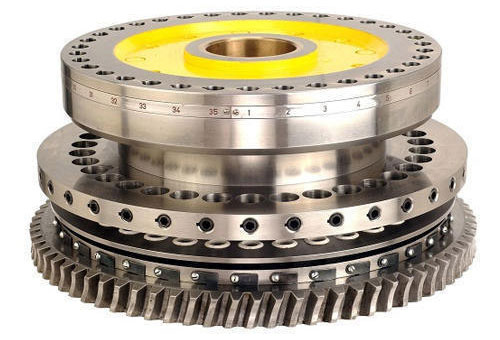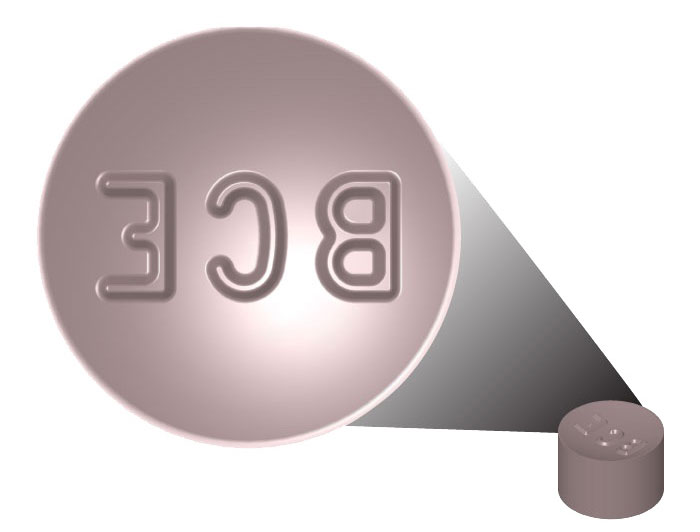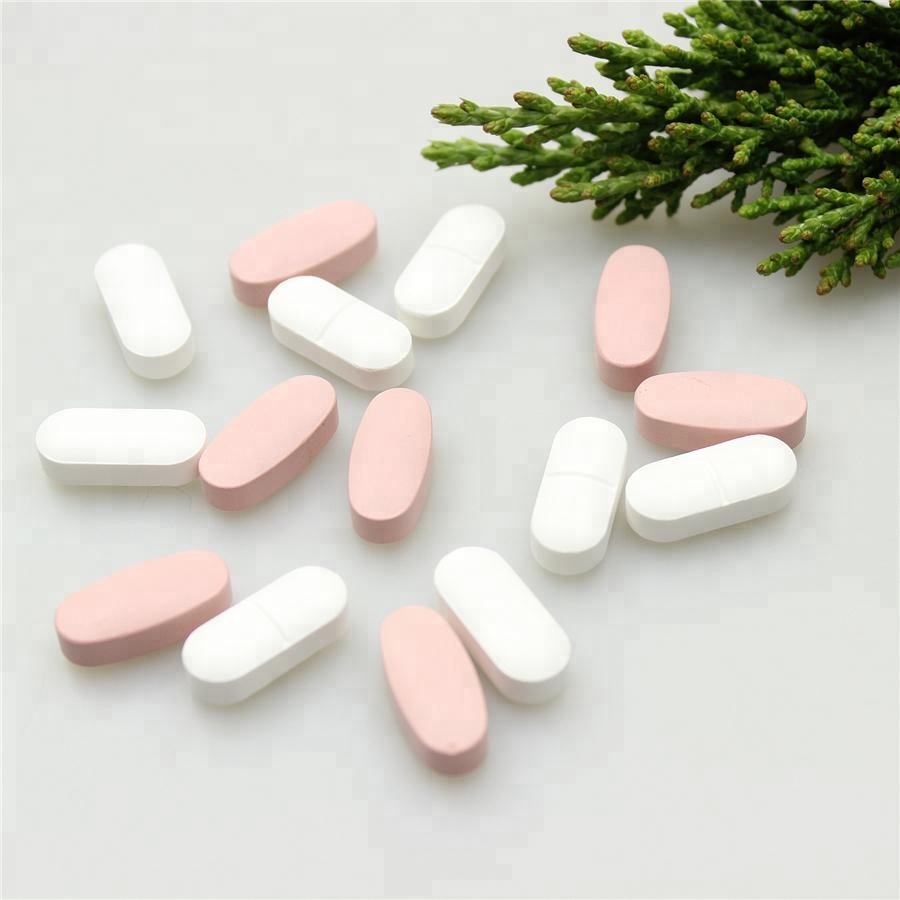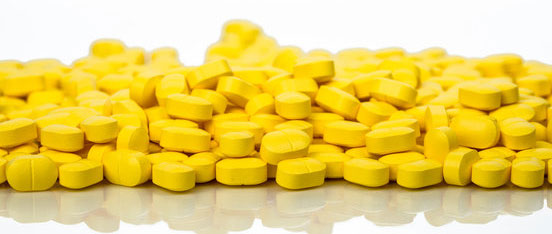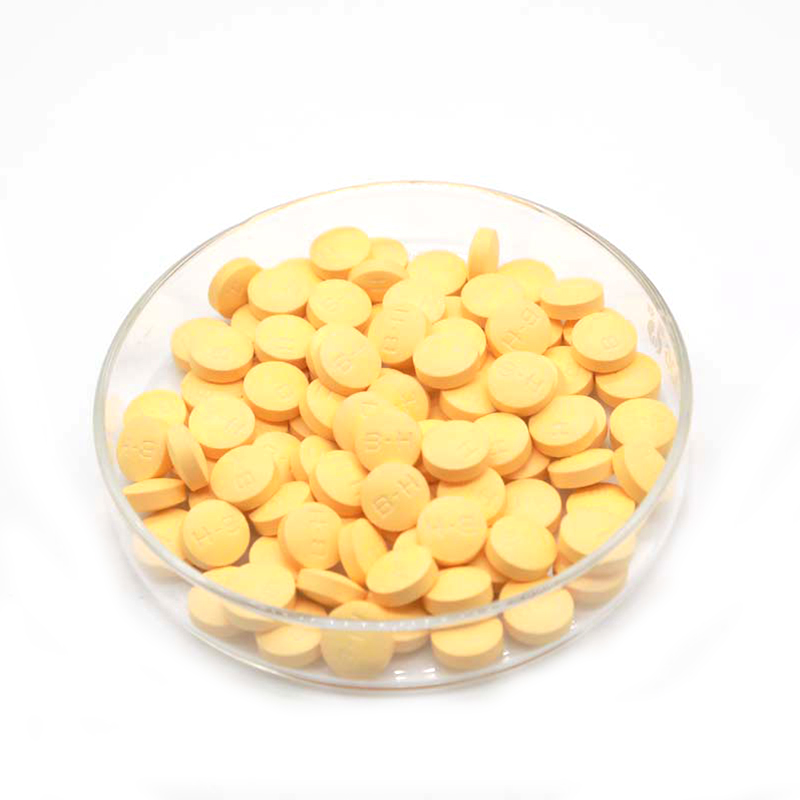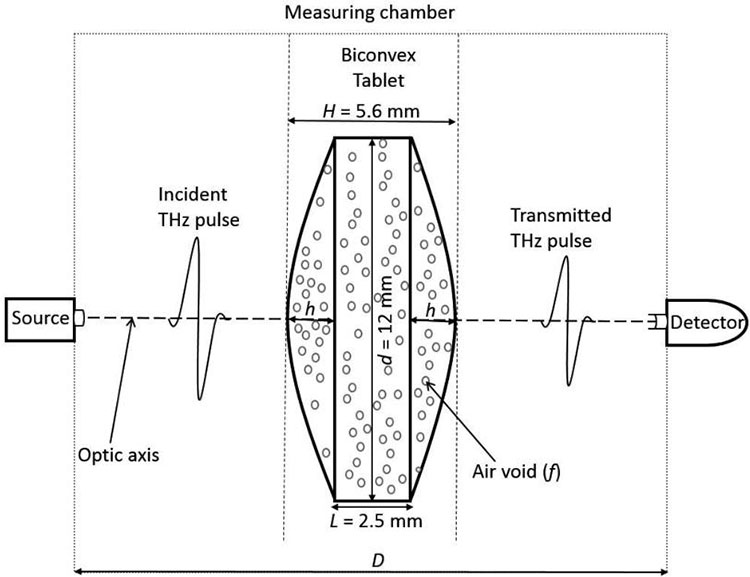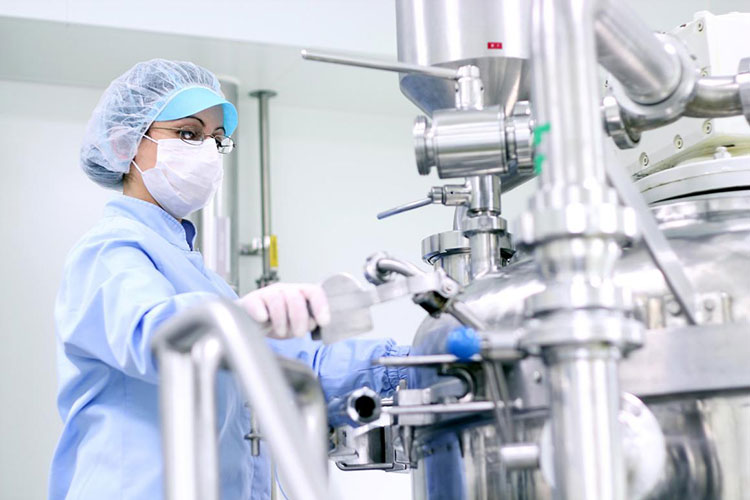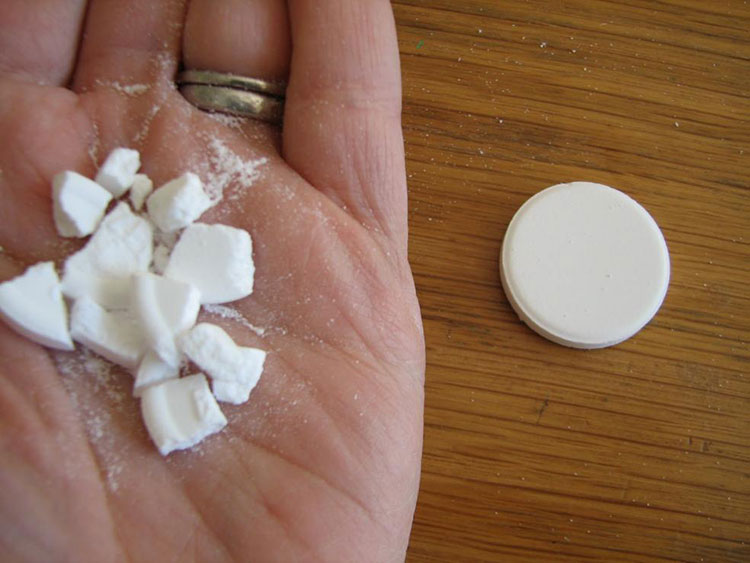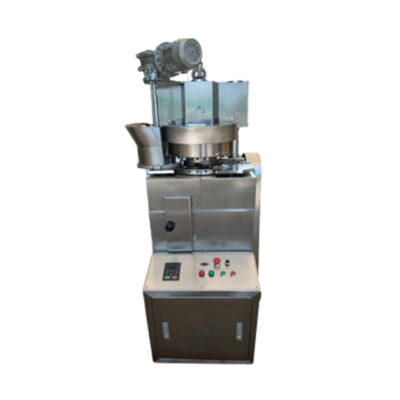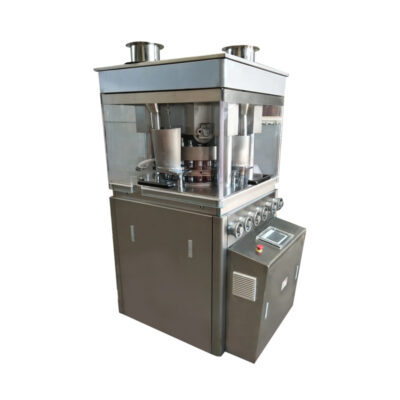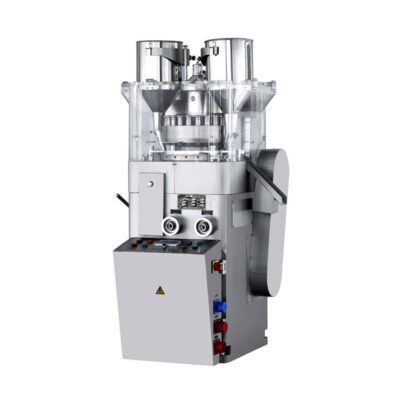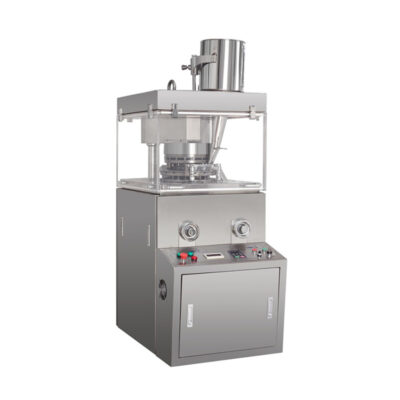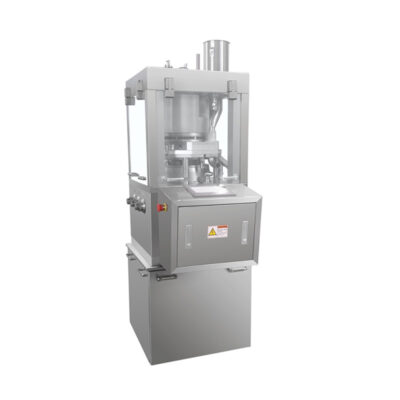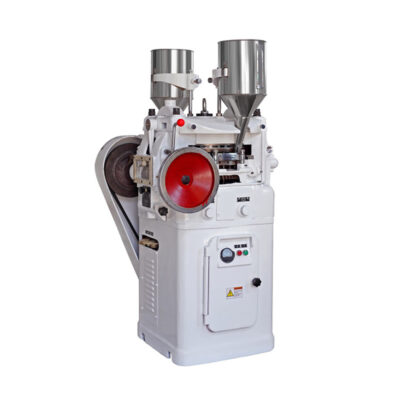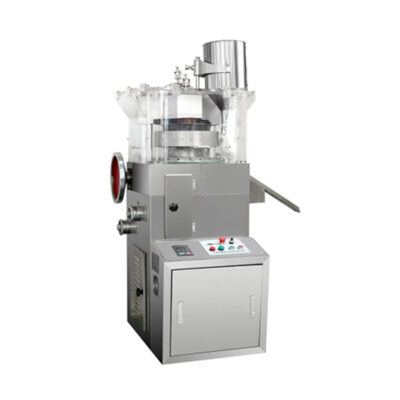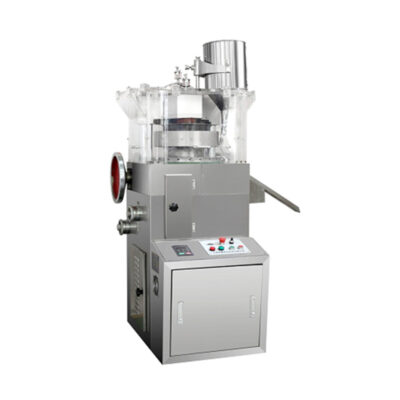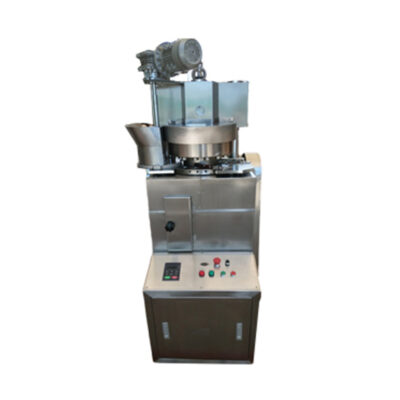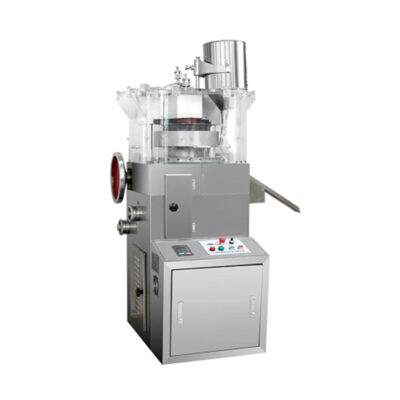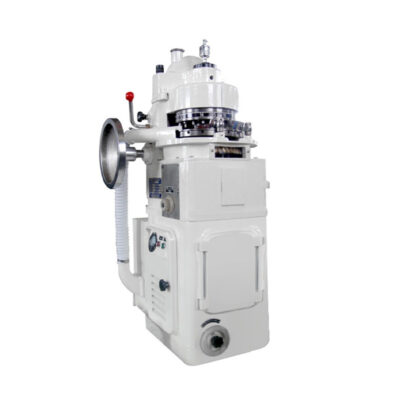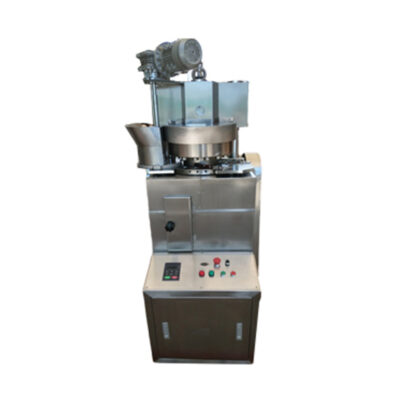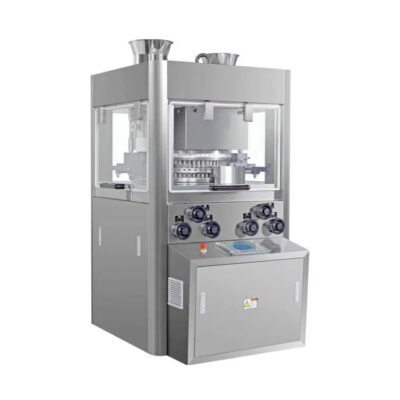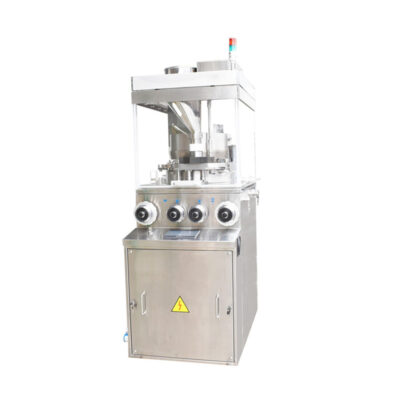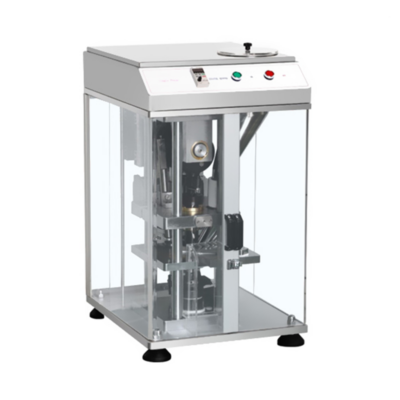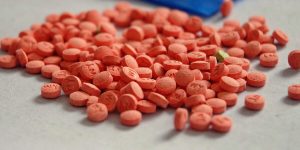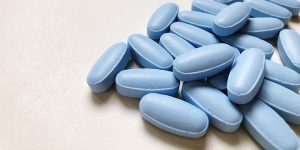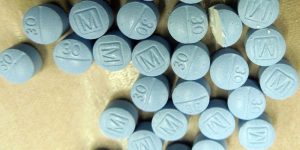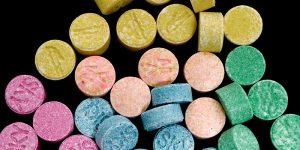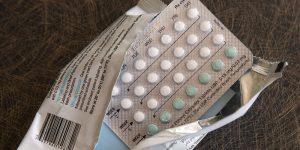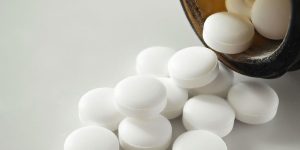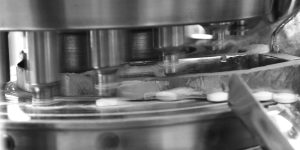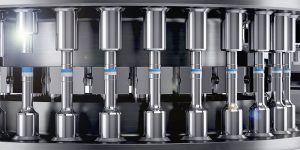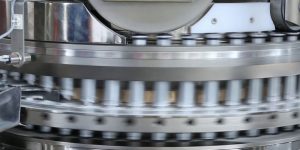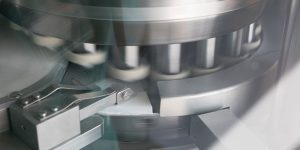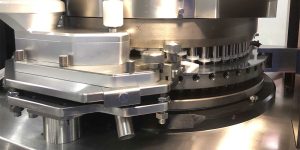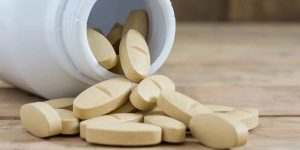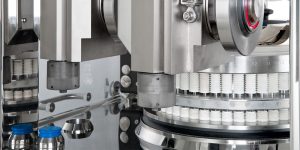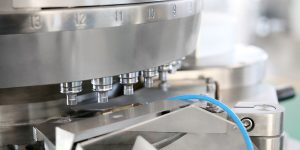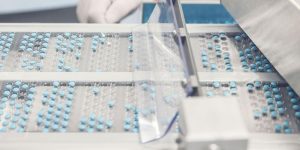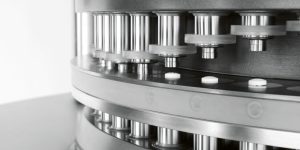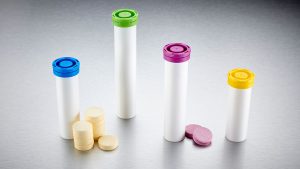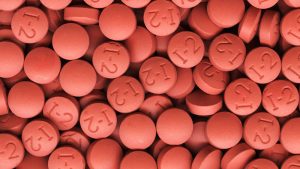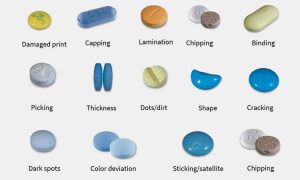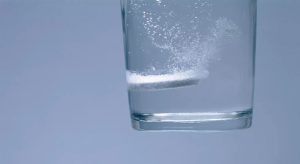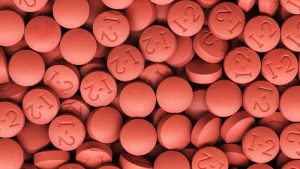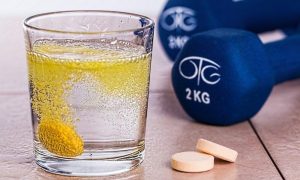Tablet Press Machine:The Ultimate Buying Guide In 2025
Today, several drugs are administered in tablet form. However, their designs in size and shape vary for different industrial uses. Tablet presses are machines intended to pack drug powders and granules into tablets. They should be profoundly exact to make uniform tablets that each tablet has uniformity. All of its extraordinary features make it a must-have accessory in the pharmaceutical and cosmetics industry.
The development of the tablet press has been an ongoing process. As a result, tablet Press Machine got an extraordinary transformation in the industry of tablet manufacturing. In the past, hand-driven tablet press machines were used, which have been modified to advanced tablet pressing machines. To stay up with the latest, we ought to know about this change and modernize our assembling process.
Hence, here's a definite guide that will allow you to get detailed knowledge of what these machines are. With the basic information in the beginning and the thorough knowledge, this guide will help you understand this machine. Let's begin.
1. How Do You Describe A Tablet Press Machine?
AIPAK tablet press machine
A tablet press is an electromechanical or mechanical device that compresses powder into tablets of uniform size, shape, and weight. They contain the same quantity of each drug ingredient to maintain uniformity. A wide range of materials, including pharmaceuticals, herbs, industrial pellets, cleaning products, and cosmetics, can be manufactured through tablet press.
All tablet press applies the basic principle of compress force. These machines continuously press the irregular materials and industrial pellets into a refined shape. The most important component of giving shapes to the device is a pair of dies. It adjusts the depth and thickness of the material.
Tablets presses, with highly innovative features, are easy to use and maintain. You can also name these industrial tablet presses as tablet compressing or punching machines, tableting machines, pharmaceutical tablet press, and pill pressing machines.
2. What is Double Rotary Tablet Press Machine?
The production process needs to be more efficient with the increasing demands of medicines. Therefore, industries need machines that give bulk output in less time. The double rotary tableting machine is one of the most capable machines of producing around 200,000 pieces of tablets in one hour.
AIPAK Double Rotatory Tablet press Machine
But why are they in so much demand? Because they offer production of round and double-sided tablets. They produce definite and simple tablets from granulated material. There is maximum cleanliness and accessibility. Any machine operator can easily run the double rotary tableting machine without much hassle.
Before getting into their special features, let's clear a basic confusion between double rotary and double-sided rotary tablet press machines. The working principle is the same. However, they are not the same and have a slight distinction. The former one has two sets of feeding systems as well as two sets of discharging chutes. Each station of punch tooling fills, presses, and ejects twice in every revolution of the rotary table, which means that a double rotary gives double output.
On the other hand, a double-sided rotary pressing machine has two sets of feeding systems. But, the difference is that they have only one discharging chute on the machine. Every station of punching tool will also achieve twice filling, pressing, and ejecting; as a result, manufacturing double-sided or bi-layer tablets.
3. Why Do You Need A Tablet Press Machine Offer To Your Business?
Every industry has its own specific needs. Some require professional and experienced laborers, whereas others require specific industrial tools. No doubt that human experts are needed in almost all production lines. Yet, there must be some automatic machinery that will make your work easier. One such machinery is tablet press machines.
These are some reasons that why you need a tablet press machine for your production.
- If your business is related to the food, pharmaceutical, chemical, cleaning, cosmetic industry, or any other affiliated industry, you must check out these machines. Tablet presses are essential for your business as they offer so many precise choices for any production line.
- Another reason is the development of newer technology, such as direct composition technology.
- These machines also offer you the development of stringent standards of cleanliness. Thus, helping you to comply with the Current Good Manufacturing Process (CGMP).
- It has introduced automation and continuous monitoring of production processes.
- Last but not least, tablet press machine has increased rate of production because of increased demand. As a result, it has become a new necessity.
4. What advantage i can get if buy a Tablet Press Machine?
Advantages of Buying Tablet Press Machine
These compressing machines offer better methods than other traditional ones for producing uniform tablets. They have good cost performance with less energy consumption. They are best applicable to industries where mass production is required.
1. Offers Variety of Shapes
A tablet press machine helps you compress powders into uniform size, shape, and weight.
However, it does not mean that they only produce a single type of tablet every time. Instead, it also makes pills and tablets in different shapes, sizes, and weights. It depends on the different shapes of dies. Following are the most common options available.
- Round-shaped die: You can use it to press concave, deep concave with flat-faced and shallow concave with ball-shaped tablets.
- Oval-shaped die: You can compress flat-faced tablets deep concave with bevel edges by using this die.
- Capsule die: With this, you can make concave tablets with bevel edges.
- Geometrical-shaped die: It helps make a wide range of tablet designs such as triangular, rhombus, rectangular, or benzene shapes.
2. High Quality
Manufacturers of these machines several quality tests to ensure that they meet all the required standards of reliability, quality, and performance. As a result, they efficiently complete the operation of powder filling, tablet pressuring, and tightening.
The advanced methods and components like capping and chipping, lamination, picking and sticking, etc., have significantly reduced the chances of tablet flaws.
3. High Output
You can manufacture pills in bulk amount at a very high speed. It also saves time. Less wastage and more productivity are what you need for your production line.
The components of machines meet the GMP requirements. Yes, they are easy to clean. Furthermore, they offer sanitary conditions for tablet pressing; you can open its windows for cleaning. In addition, transparent windows also allow you to observe the working conditions clearly.
4. Uniform Operation
No one can produce even and consistent tablets. There is always a chance of minor differences in sizes and shapes. On the other hand, the tablet press makes sure that all the pills are in the exact sizes. A tablet is pressed from both the top and bottom sides using equal pressure. As a result, it compacts the powder in tight tablets without weight variations.
5. Increases Hygienic
These machines are mostly automatic, so it does not involve any human contact. They also ensure that no germs and bacteria are transferred to the drugs. With manual work, chances of hygiene and uniformity decrease.
6. Easy To Operate
With the accessible operation settings, the machines save human labor. Your only job is to monitor the process.
Both single punch and multi-rotary tablet press are useful in tablet production. Following are the advantages of both types of pressing machines that will help you choose the best one for you.
Advantages of Single Punch Tablet Press
- The single punch structure is perfect for small-batch productions.
- They are easy to run and work at a high utilization ratio.
- Minimum maintenance is required for single-punch tablet machines. Hence, affordable in price.
- They reduce weight variations between tablets by using higher pressure. Therefore, supporting a low noise level during production.
- They can manufacture odd-shaped drugs with a diameter of up to 20mm.
Advantages of Rotary Tablet press
- They have a high output rate with a minimal amount of labor.
- They carry out dust-free production and easy to clean.
- Their efficient speed saves your time, giving an output of thousands of tablet pieces per hour.
- They are best suitable for massive tablets production.
- Automatically manage the powder-filled cavity by a moving feeder.
- Rotary tablet press machines permit independent control of both weight and thickness.
5. Are there any disadvantages of the Tablet Press Machine?
Many pharmaceutical and other factories choose tablet pressing machines since they have high output, stable quality, and large-scale production. However, apart from many benefits, these machines have some flaws such as:
- They are big in size and may need a lot of space and storage for their operations.
- Rotary tablet machines are not appropriate for small-scale production. Thus, it is unfit for R&D projects.
- Multi-station pressing machines need some extent of expertise to handle since it has various automated systems.
6. How Is A Tablet Formed With A Tablet Press Machine?
Formation of a tablet is done by combined pressing action of two punches and a die called station, also known as tablet tools. The process starts with the formation of a powder. It is generally a mixture of several components. For instance, there are active pharmaceutical ingredients with various essential excipients in pharmaceutical products, including lubricants, diluents, and binders.
The powder then undergoes the process of granulation to attain the given size distribution. Finally, it is fed into the tablet press, where the granulated powder is metered into a cavity. This cavity has an upper and lower punch that defines the precise size and shape of the finished tablet.
The excess is brushed from the top of the die, and the lower punch is strained down. It is covered temporarily to avoid spillage. Once the cover is removed, the upper punch is carried down to contact the granulated powder. Both punches come together in the die and fuse the powder through force. Hence, creating a solid tablet form. After pressing, the lower punch is uplifted to eject the tablet.
7. Compare the available options within the Tablet Press Machine?
Comparison between the Types of Tablet Press Machine
· Similarities
Both single and multi-station tablet pressing machines are similar in their working. Both are required compress force to process a hard tablet. The main objective is the same; efficient production of powder into tablets with uniformity in sizes, shapes, and weight.
· Differences
- However, there are some distinctions in their features. For example, one notable difference between single and multiple rotary tablet press is that the latter has a double yield than a single one. It is because double rotary machines have two sets of discharging chutes along with a feeding system.
- With rotary tablet press machines, you can produce thousands of tablet pieces in one hour, whereas a single punch one allows hundreds of pieces per hour.
- Single punch tableting machines are helpful in R&D tooling and rotary tablet machines have B and D tooling, which gives a smooth tip surface to the tablets.
- Single punch tableting machines are best for small batches while rotary tablet machines are fit for large-scale productions.
8. How is the different available types/option of the Tablet Press Machine?
Different Available Types/Option of the Tablet Press Machine
Based on your requirements, you can select different types, models, sizes, and designs of tablet press machines. Each type has its unique features. Specification and naming of these machines depend on their state of technologies and applications. They manufacture annular, irregular, or engraved tablets by interchangeable turrets within the favorable OEE (Overall Equipment Efficiency).
Based on the design, there are two types of tablet presses; a single punch press machine and a multi-station rotary press.
1. Single Punch Tablet Press Machine
Single punch tablet press machine
They are the simplest tablet pressing machines, also known as eccentric or single station press. They have a relatively low production capacity. Single punch presses are suitable for small batches production, R&D tooling, and small spaces. They are easy to operate and cost-effective.
As the name suggests, it utilizes a single set of station tooling, a die, and a pair of punches. The compression force is exerted only by the upper punch; meanwhile lower punch remains static. First, the filling is done; the upper punch is lifted, and the lower punch drops to create a hole in the die. Powder falls into the die from the hopper. Next, compression of a tablet is completed, and finally, the feed material is ejected.
Important functional parts include hopper, die cavity, punches, cam truck, table adjuster, and ejection adjuster.
2. Double Rotary Tablet Press Machine
AIPAK Rotatory Tablet Press Machine
The production process needs to be more efficient with the increasing demands of medicines. Therefore, industries need machines that give bulk output in less time. The double rotary tableting machine is one of the most capable machines of producing around 200,000 pieces of tablets in one hour.
But why are they in so much demand? Because they offer production of round and double-sided tablets. They produce definite and simple tablets from granulated material. There is maximum cleanliness and accessibility. Any machine operator can easily run the double rotary tableting machine without much hassle.
Before getting into their special features, let's clear a basic confusion between double rotary and double-sided rotary pressing machines. The working principle is the same. However, they are not the same and have a slight distinction. The former one has two sets of feeding systems as well as two sets of discharging chutes. Each station of punch tooling fills, presses, and ejects twice in every revolution of the rotary table, which means that a double rotary gives double output.
On the other hand, a double-sided rotary pressing machine has two sets of feeding systems. But, the difference is that they have only one discharging chute on the machine. Every station of punching tool will also achieve twice filling, pressing, and ejecting; as a result, manufacturing double-sided or bi-layer tablets.
Key features of double rotary press machine include a magnetic clutch for fast and smooth operation, B&D tooling stations, interlocking guards and other automatic features.
9. How to Determine the Tablet Press Production Capacity?
The capacity of the tablet press machine is calculated by the rotation speed of the interchangeable turrets and the number of stations on the machine. By applying multi-tips tooling to the existing machines have a great impact on production capacity. It will increase the output and decrease the production time. Moreover, a larger tablet press with a larger turret pitch diameter also affects its increasing power.
10. Why Are Tablets Popular Dosage Form?
Dosage in the form of tablets is a popular choice for many pharmaceutical industries. They are suitable for both the manufacturer and the patient. Most of the pills are used for oral drug administration.
But what makes them so demanding? Here are the top reasons why tablets are popular.
- They are relatively easy to process and manufacture.
- Tablets are also convenient in packaging and transport.
- Their shapes and colors are elegant in appearance and can be modified for aesthetic purposes.
- Patients choose tablets as they provide precisely measured dosages. In addition, they offer good physical and chemical stability.
- Tablets dosage forms are an economical option for the manufacturer; there are relatively low production costs.
11. How does Pharmaceutical Tablet Press Control the Weight of Tablets?
The automatic weight control operates by permitting the tablet press to adjust weight based on differences in compression force. When the compression force is below the limit, a signal in the electric form informs the tablet press to fine-tune the weight adjustment cam to boost the fill volume.
At the increase of the compression force, a new electric signal informs the tablet press to fine-tune the weight cam to lower the volume of fill. This is the procedure of weight control in the Pharmaceutical Tablet Press.
Layering and Weight control of Tablet-Photo Credit: ptk
In simple words, you have to make incremental adjustments to the weight cam to obtain correct volumetric change, which according to a fixed and settled product density, relates to the gravimetric change.
Even after doing all this, if the tablet weights still differ a lot, look carefully at how the machine keeps the product in the die prior to getting compressed to a tablet. The soft or light powders might splash from the die, or the centrifugal force of the rotating turret might cause the powder to release.
In both situations, the tablet will be below the average weight. A good method to avoid splashing is to utilize the pulldown feature given in many tablet presses these days. This pulldown feature pulls the lower cam in the downward direction to allow the powder column to drop in the die after filling. This avoids the under-filling and splashing of the powder.
12. Why should you Select Custom Tablet Press Tooling System?
Customization is a significant procedure if you want to reduce the chance of getting counterfeit tablets. This is why so many famous pharmaceutical companies choose different shaped tablets. They opt for tablet compression tools having unusual designs.
Tablet Press Tools-Photo Credit: wilsontools
13. Why should you Select Interchangeable Turrets Tablet Press Machine?
Interchangeable Turrets Tablet Press Machine is a commonly used equipment in the pharmacy industry. It is a very useful machine to ease pharmacological tasks. Information on this machine from the Chamunda Pharmacy is given below:
The Interchangeable Turrets Tablet Press Machine is an intelligent and versatile machine that is completely automated. This machine comes with advanced features needed for high-quality pharmaceutical purposes. It is made on the principle of the latest tablet technology.
Medium to big sized production is allowed in the machine. Quick access to different parts of the Tablet Zone and fast removal are guaranteed by the tool-less design. For the best cleaning, Discharge Chutes, Feeding system, and Hooper can be taken out.
This allows the gain of change with time. The modern feature of the interchangeable turret allows it to add all three kinds of turrets simultaneously on the machine. The tablet parameters, swing type pre, equal main, main compression rolls, and pre-compression forces can be monitored via the touchscreen.
The machine is given Servo Drives for the tablet controls. This is given with the option of a turret having 37, 45, and 61 stations relating to the different tooling needs.
Tablet Press Turret-Photo Credit: indiamart
14. How can you Set up a Multiple Tooling Tablet Press Machine?
1. Consistency
The success of tablet making depends on the maintenance and hygiene of presses. If the equipment is not maintained properly, the tablets will face inconsistencies in thickness, quality, and weight.
Inconsistent working lengths also impact the tablet. Improper filling of the dies can occur due to old fill cams. If they become too deep, granules will fill the dies, which then cause inconsistencies in weight.
Therefore, regulating the accurate flow of granulation is crucial because it impacts the regularity of the compressed tablets. A uniform flow of granulation causes usual high-quality tablets.
2. Speed
The Multi-Tip Tooling has positively affected the speed of tablet production for all industries. Companies that create micro tablets can turn them at the average speed of 5000/second tablet production.
3. Sticking
Sticking-Photo Credit: manufacturingchemis
This is a common problem with tablet press machines. In this issue, the granules of the tablet powder stick to the tool face. It occurs due to using sticky formulation and the inability of the presses to compress.
This problem is serious because it goes unnoticed and is only visible when the tablet is in production. In the production phase, sticking can impact the working of the tablet-making procedure.
To solve this issue, a few companies use punch coating, which improves the tablet release features of the press. But this solution is expensive and oftentimes impractical. Another alternative solution is using a different grade of steel which avoids sticking and boosts the release of tablets.
4. Innovation
There are two technologies that showcase the innovation in tableting machines. These are Fette die segment and Courtoy die ring. The first one offers a high level of technical accuracy even during the production of unique tablets.
The segments are a replacement for the conventional dies and die-locks, which hold them properly on a die table. The benefit of this innovation is that they raise the number of stations in a specific diameter of the turret.
This boosts the number of tablets produced in each revolution of the turret. The second benefit is that it greatly lowers the machine setup time by reducing the long procedure for setting the separate die in position.
The other innovation allows the usage of both die shells and conventional dies. There are special die arrangements that are located in a place without conventional die locks.
In order to eliminate and replace the Courtoy die ring, the upper and lower parts of the turret can be separated to let uninterrupted access to the die ring. This innovation greatly lowers the setup time.
15. How do you Test the Quality of Tablets?
Tablets are drugs in the solid form made by pressing a dosage of 1 or more active drugs with the addition of a few additives. Tablets are in all types of shapes and edges.
When the tablets are produced, they undergo numerous quality control tests in order to know if they meet the criteria. The quality control tests of tablets are either non-pharmacopoeial (unofficial) or pharmacopoeial (official) tests.
Pharmacopoeial official tests are of the following types:
1.Weight Variation Test
The test for weight variation is carried out by separately weighing 20 tablets that were randomly chosen from the batch. The separate weights are compared with the average weight.
The sample is in accordance with the USP standard if two tablets are beyond the percentage boundary and if no tablet varies by more than 2 times the percentage limit. It is to be noted that coated tablets are excluded from these limitations but must follow the content test.
2.Content of Active Ingredient
This test is measured from a sample of 20 tablets which are randomly chosen from a variety of tablets. Their weights are then measured simultaneously and are crushed in the mortar.
A quantity equal to the theoretical content of the tablet or the average of crushed tablets is weighed in a balance. This weighed powder is released in the solvent in which the content is completely soluble or in a solvent given by the drug monograph.
This solvent is filtered, and a portion of the remaining liquid is directed to the stipulated assay methods. The assay methods are commonly provided in the separate tablet monograph.
Analysis of the active content is commonly done by using High-Performance Liquid Chromatography or spectrophotometry. Beer-Lambert's law is used in this step. The results taken offer the average content of 20 tablets but provide no sign of the variation of drug ingredients in the separate tablets.
The boundaries of rejection or validation of tablets are commonly displayed in the separate tablet monograph.
3.Dissolution Test
Tablet dissolution test Apparatus-Photo Credit: scientz
This test measures the time needed for a specific percentage of tablets to a go-to solution. This test is a step forward to the analysis of the physiological availability of the drug. The factors affecting the dissolution are:
- Type of dissolution equipment
- Sensitivity of analytical process used
- Nature of the dissolution pH, thickness, medium, ionic strength
- Temperature
- Volume
- Intensity of agitation
- Sink or non-sink condition
4.Disintegration Time Test
The earliest step in drug dissolution is the division of tablets into powder granules or particles. This procedure is known as Disintegration. All the tablets have to clear the test for Disintegration.
This test is carried out in vitro by using the appropriate apparatus, which includes an assembly having 6 transparent tubes of USP dimensions held on a 10-mesh stainless steel screen.
In the test, the tablet is placed in the tubes of the basket. By using a mechanical device, the basket is elevated and lowered in a bath of fluid at specific cycles each minute. The time allowed is 15 minutes for the majority of normal tablets.
Disintegration has occurred if there are no fragments on the screen. Even if there are particles, they are soft. Disintegration is not an equivalent of dissolution. However, the dissolution from the fragmented tablet controls the full or partial appearance of the drug. Disintegration is used as a guide for uniformity. The factors impacting the disintegration of tablets are:
- Expertise
- Medium used
- Compression Force
- Nature of the drug
- Temperature of test
- Type and concentration of binder
- Nature of tablet
- Excessive lubrication
- Dilute used
- Type and quantity of disintegrant used
Examples of Non-Pharmacopoeial tests are given below:
1. Tablet Thickness
Tablet Thickness-Photo Credit: researchgate
This is determined by force applied in compression, the diameter of the die, characteristics of the fill material, and the amount of fill allowed to go to the die cavity. In order to produce tablets of regular hardness while and between batch productions for the identical formulation, caution must be exercised to use the same aspects of pressure, fill, and die.
The pressure factor impacts not only the hardness but thickness of the tablet. Hardness is the most important aspect because it impacts dissolution and disintegration. Tablet hardness is determined by a thickness gauge, vernier caliper, or automated equipment.
The hardness of the tablet should be within the 5% variation of the standard value, depending on the size of the tablet.
2. Crushing Strength Test
Crushing test of Tablet-Photo Credit: vogel
This calculates the degree of force required to break the tablet. The crushing strength is checked by the Strong-Cobb tester, Monsanto tester, and Pfizer tester.
All these testers are manual, but some electric testers are Erweka, SOTAX, and Van Kel. A force of 4 kg is thought to be the minimum requirement for a tablet. Measurement is commonly done by using at least ten tablets.
The hardness of a tablet depends on:
- Type and concentration of lubricant used
- Space between the punches during compression
- Features of the granules which are to be crushed. For instance, harm under load.
All these tests are usually concerned about the in vitro release of the ingredients and content of the tablets.
16. What is the Working Principle of the Tablet Press Machine?
Tablet press machines work when two punches and a die combines together by a force. Tablets are formed by pressing the granular material with top and bottom punches in a die. The common principle in the tablet press machine is hydraulic pressure which is transmitted by the static fluid. A pressure applied from the outside is sent via static fluid in all the directions. Hydraulic pressure also allows the multiplication of the force as required.
Following are different stages under which tablet formation takes place.
1. Filling
For tablet compression, granular material is prepared and positioned. The mixture is formed and blended into the homogenous blend. It flows to punch-die cavity which is made up of punch die and lower punch. The latter one controls the volume of the cavity. It basically adjusts the density of the granules according to appropriate volume to form the tablets.
2. Metering
It involves removal of the excess granules from the pressing machine. Here the height of bottom punch directs the volume of granules in the die. And, the metering cam further controls its height.
For accurate weight of powder, the lower punch arises at a specific degree in the hole. Moreover, all the excess granular material is erased from the surface.
3. Compression
In the formation of tablet, both punches within the die join together by force or pressure. When they enter into compression stage, they move between compression rolls (two large wheels). A series of rollers expel air and apply compressional force to the powder. The stability of pre- compression and main compression rollers is important for desired size and shape.
Moreover, the distance between both punches determines the thickness of the pill. For example, if both punches are close to each other then a thin tablet is formed.
4. Ejection
After compression comes the ejection stage which involves the release of the tablet out of the die station. There is an ejection cam right after compression rolls. The top cam and upper punch withdraw and move above the turret table. At that moment, the bottom punch rises which results in the pushing of the fully compressed tablet from the die cavity. In addition, scrapper collects the tablets in the container.
AIPAK Working Principle of Tablet pressing Machine
17. Explain in Detail the Parts of the Tablet Press Machine.
There are 12 functional parts of a rotary press in total. They are explained below:
1. Die Cavity
In this part, the powder granules are crushed in tablets. This judges the size and diameter of the tablets along with the thickness.
2. Hopper
This component holds the powder blend, which is to be compressed in tablets.
3. Punches
This includes the upper and lower punches. These move in the die to compress the powder into tablets.
4. Feed Paddle
This part assists in forcing the feed into the dies, especially during quick rotation.
Rotatory Tablet press Feed frame-Photo Credit: sciencedirect
5. Cam Tracks
This allows the movement of both the lower and upper punches.
6. Lower Cam Track
This allows the lower punch in the filling stage. This guides the die bore to be overfilled so that a correct adjustment is possible.
7. Discharge Chutes
This is the component where the tablet goes through for collection after being hit with the take-off blade.
8. Ejection Cam
This part assists the lower punch in the upper direction, assisting the ejection of tablets from the die cavity after compression.
9. Depth of Fill Control
This corrects the lower punch track at the end of the fill stage to determine the number of powder remnants in the die before the compression.
10. Main Compression
This roller exerts the last compression force required for the production of tablets.
Tablet Compression Cycle-Photo Credit: sciencedirect
11. Pre-compression Rollers
This component offers the granules an early compression force to eliminate excess air which might be trapped in the die.
12. Take-off Blade
This part is fitted in front of the feeder, and it pulls the tablet down the discharge chute.
18. What are the Technical Specifications of the Tablet Press Machine?
A tablet press machine is made of many components, all of which have their own specifications. Some of these are given below:
1. A number of stations:
This can vary from 45 to 75.
2. Output:
This can vary from 325000 to 545000.
3. Maximum operating pressure compression:
This is a fixed 10.
4. Type of Tooling:
This can be either D, BB or B.
5. Maximum depth of Fill:
This varies from 17.5 mm to 20 mm.
6. Maximum tablet diameter:
This varies from 11 to 25 mm.
19. What Standard should you Keep in Mind when Buying a Tablet Press Machine?
A tablet press machine is an excellent investment but similar to buying any other equipment; research is needed. There are aspects of a tablet press machine that should be kept in mind before purchasing the machine. Some of these are listed below:
1. Hopper Design
This is the part where the production takes place. The Hopper should be designed in a way that allows freedom of flow to the tablet powder so that it easily goes to the compression chamber.
Moreover, the Hopper should be in direct contact with the powder. For this purpose, its construction should be of stainless steel to avoid the metal pieces coming in the tablets and abrasion. If you want the products to be separated, search for a machine having vibratory rods in the hopper to maximize the uninterrupted flow of tablet powder.
2. Machine Type
You need to research and decide on the volume and size you need because there are many options. For instance, a rotary tablet press, single station, or a multi-station tablet press machine is available.
This decision is based on the production volume. If your volume is high, you will need a rotary press machine that can produce enough tablets.
3. Tablet Press Turret
Turrets are the highlight of all components of the tablet press machine. The holes on the turrets should be aligned with the die system for ideal tablet production.
It is important to observe the holes of the turrets and make sure that the die system fits easily into them. Because the turrets are the criteria for the number of stations of a machine, you should search for one which has more turrets.
4. Feeder System
AIPAK Feeding Hooper
The feeder system includes two components; the feeding pedals and feeder housing. These parts guide the tablets from the hopper to the die system. It also makes sure that the feeding procedure of the content is correct.
Since this part will also be in direct contact with the tablet content, the feeder system should be made of high-quality stainless steel, and its design should be 316L. With these specifications, the tablet powder can not stick to the feeder system.
5. Cam Tracks
During the tableting procedure, cam tracks assist the upper and lower punches. It also keeps them stable at all the stages of tablet compression. Cam tracks usually have the problem of friction which occurs due to the dryness of the track. With the friction, the punches can not be well aligned to compress the tablets.
20. How do you Troubleshoot a Tablet Press Machine when a Problem Occurs?
Troubleshooting-Photo Credit: theindustrialtimes
In normal conditions, the tablet press machine might develop issues that affect performance. It is not advised for an average person to disassemble the machine. If you want to know how to troubleshoot common tablet press machine issues, read below.
· Unusual Variation of Punch Depth
With the inconsistencies in punch depth, the tablets will vary in thickness and size. This will lead to the rejection of tablets. In order to solve this problem, reassemble sets of punches and die.
The tooling system might have gotten old, so see if it needs a replacement. Check if you are using the correct dimensions of tooling.
· Insufficient Flow in the Die Cavity
When there are old components or misalignment, it is possible for an insufficient flow in the die cavity. This leads to inconsistencies in the production phase and rejected tablets.
To fix this problem, elevate the feed chute to boost material flow. Increase the speed of the feeder, or you can elevate the pin grid to let more particles flow. Observe the material you want to convert into a tablet. Its size might be too big.
· Sticking of Lower Punches
Sticking Punches-Photo Credit: sciencedirect
This is another common issue if the Pharmaceutical tablet press machine has not been cleaned for a long time. To fix this issue, see if there is a buildup of material at the tips of the punch. Clean if there is. Clean the punches or sockets if they are dirty too.
· Inconsistent in the Tablet Weight
This is a common problem that causes a lot of wastage. A pro tip is to sample and determine the weights of tablets in the production phase. This issue occurs due to the loosening of the lower punch or the segregated powder.
For either cause, try tightening the punch and carry a cleansing procedure. The powder breaks up if the feeder system is running quickly.
· Unusual Noise
A tablet press machine has moving parts that are joined together by bolts. Therefore, lubricate the moving parts and see if there is any loose bolt.
Also, check if the driving mechanisms are in accurate locations. That is, conveyor belts are properly fixed, and gears are grinding properly.
· Inconsistent in the Tablet Weight
This is a common problem that causes a lot of wastage. A pro tip is to sample and determine the weights of tablets in the production phase. This issue occurs due to the loosening of the lower punch or the segregated powder.
For either cause, try tightening the punch and carry a cleansing procedure. The powder breaks up if the feeder system is running quickly.
· Broken Tablets
This issue leads to huge losses. For this problem, observe the ejection system and make sure that it is clean. Or, you can try adjusting the ejection clearance.
Broken Tablets-Photo Credit: daman
21. How to Maintain a Tablet Press Machine to Run it Smoothly?
A lot of factors affect the lifetime of a tablet press machine. For instance, corrosion, mishandling of tooling, turret damage, and incorrect tooling setup. The easiest way to boost the life expectancy of the tablet press machine is by adopting a cleaning routine.
- Remove the upper and lower punches along with the die.
- Turn off the power when the batch is runoff.
- Cover the surface with a light coat of oil or grease before storage.
- Remove granules and loose dust with the help of a vacuum cleaner, air blower, or any other item which creates a gust of air. If dirt is allowed to gather inside for a long period of time, it creates corrosion which negatively impacts the fluent working.
- Clean the entire surfaces of the machine and dry it well. No matter what the type of tablet press machine it is, adopt a proper cleaning routine. This eliminates the product and oil residue.
- Release the pressure from the punches.
- Remove the feed shoe and feed hopper.
- Because of the oxidation of feeding materials, the machine accumulates rust. If you want to remove the rust, spray a rusting agent to make it corrosion-free. After the spray, wipe the machine with a soft cloth.
- After taking care of the rust, add lubrication to the components. Add grease to the oil cups because they give oil to the machine. If you want the machine to run effectively, routinely add grease to the oil cups and transmission parts.
22. What Problems Might Occur While Using a Tablet Press Machine?
In past, the tablets were pressed with manual machines and the problems were mainly related to strength and integrity. But, now the machines are all modified and mechanized. Yet, the problems still exist.
A number of issues can develop while using the tablet press machine. Majority of problems occur due to inadequate moisture in the granules ready for compression, faulty formulation, or faulty machine setting. Following are the common problems that might occur while using a tablet press machine.
- There is a high possibility of pollution and contamination in tableting machines. The reason behind this shortcoming is that the machine uses liquid lubricant in the lubrication system. These lubricants might leak or spill into the filling cavity resulting in contamination.
- Chances of separation of tablet into two or more layers due to air entrapped in the granular material.
- Binding and sticking of the tablet to the die wall is another possible problem.
- Failure of compression can cause poor ejection of granular material out of the die.
- Poor raw materials and improper mixing of dyes are another problem.
- Capping, lamination, hardness, and cracking can also occur in milling process.
Tablet Press Machine Related Products
Tablet Press Machine Related Posts
Tablet Press Machine Related Videos
CONTACT US
Tell us your raw material and project budget to get quotations within 24 hours.
WhatsApp Us: +86 181 6426 8586
Want the best price & newest pharmaceutical machinery buying guide,tips and trends sent straightly to your box?Sign up for AIPAK’s monthly newsletter,we’re free for your consultation and Offer you the most suitable solutions!
The Buyer's Guide
- Capsule Filling Buyer's Guide
- Blister Packaging Buyer's Guide
- Tablet Counting Buyer's Guide
- Tube Filling Buyer's Guide
- Cartoning Buyer's Guide
- Gummy Making Buyer's Guide
- CO2 Extraction Buyer's Guide
- Empty Capsules Buyer's Guide
- Suppository Filling Buyer's Guide
- Tablet Coating Buyer's Guide
- Tablet Press Buyer's Guide
- Softgel Encapsulation Buyer's Guide
Most Popular
- 7 Importance Of Pharmaceutical Packaging In Different Applications You Must Know
- 6 Advantages You Must Know About Tablet Counting Machine
- 8 Advantages of Blister Packaging You Must Know
- 6 Critical Applications of Automatic Capsule Filling Machine
- 6 Stations You must Know to Improve the Filling Quality of Automatic Capsule Filling Machine
Tell us your material or budget,we'll reply you ASAP within 24 hours

